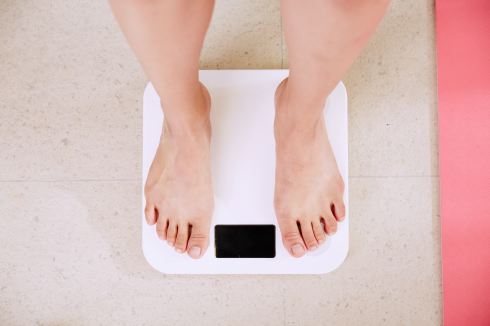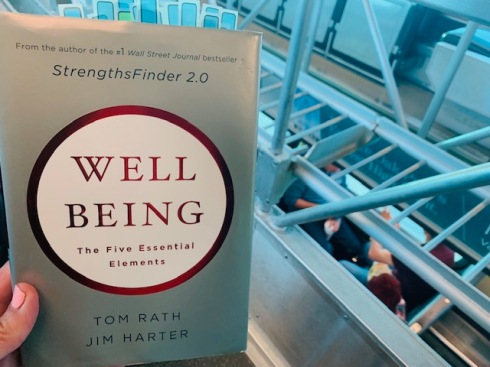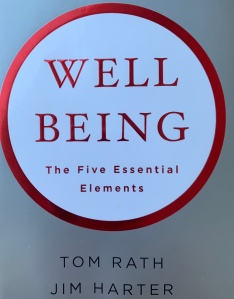
Have you completed one or more consultations with our HAWA Health Care Team? It’s a great way to review your current health conditions, goals and test results with someone who can support your goal setting and achievement. The HAWA Health Care Team can work with you to create a plan of action and educate you along your journey. They will also cheer you on to victory as you make positive health improvements through your healthy lifestyle choices. They are there to talk through and help guide you in your career, social, financial, physical and community wellbeing too. This week we are focused specifically on your Physical and Community Wellbeing.
The book we have been discussing this month in HAWA U, Wellbeing by Tom Rath and Jim Harter, suggests that 20 minutes of exercise boosts our mood for a day; no meds needed, no social drinking, no extravagant vacation, just 20 minutes of exercise. Does that sound almost too easy? It’s true! Sleep also plays a role, along with eating properly and regular exercise. The authors state, “getting a good night’s sleep is like hitting the reset button. We all need a fresh start and we get one each day! Make the most of yours by getting a restful night’s sleep. It is recommended to get 8 hours. How many are you getting on average? I’m out like a light the moment my head hits the pillow until the alarm goes off. It wasn’t always like that. I used to be overweight; obese actually. That extra weight played a considerable role in causing sleep apnea. I woke up throughout the night and woke everyone else up with my snoring. With significant weight loss over the last few years, I sleep soundly without any snoring. I feel like a new person! I needed no advanced medication to cure my sleep apnea, just weight loss. The next book we’ll be introducing in November, The Prediabetes Diet Plan, by Hillary Wright, discusses topics like weight loss being the #1 key lifestyle change within your control to reduce your risk of:
- Hypertension
- High LDL Cholesterol, low HDL cholesterol, high levels levels of triglycerides in the blood
- Type 2 diabetes
- Heart disease
- Stroke
- Gallbladder problems
- Arthritis
- Sleep apnea and respiratory problems
- Some cancers
No one wakes up one morning saying, I want to have a chronic health condition. I know, I certainly didn’t; but there was a day that I did wake up with obesity, high blood pressure, pain and inflammation, pre-diabetes and a benign tumor condition throughout my body. After being completely healthy most of my life, these were unfamiliar waters I was wading into and I needed to get to higher ground fast! For me, my weight loss journey eliminated all my chronic health conditions and returned me to a state of low risk, based on my normal BMI, low blood pressure and preventative labs all in the healthy range. My physical wellbeing has improved and returned to the state I was in 15-20 years ago. It was worth all the effort to lose the weight. It is life saving and enhancing to quality of life. Research shows, “there are 1.5 billion people who are not doing what they want to do today because of physical pain,” state the authors of Wellbeing. Imagine that. I spoke to a member today to whom we had suggested reducing her intake of sugar to reduce her inflammation, that would then reduce her chronic pain. Guess what? She did it, and it worked! No meds, no surgery, just reducing processed sugar intake and increasing consumption of anti-inflammatory foods. Is that the magic solution for the 1.5 billion suffering in pain? Perhaps it may be for many, certainly not all, but research shows that decreasing processed sugar consumption shows a decrease in inflammatory markers in your blood. No magic really, just a cause and effect reality.
The authors suggest three recommendations for boosting physical wellbeing:
- Get at least 20 minutes of physical activity each day.
- Sleep enough to feel well rested.
- Load up on natural foods that are red, green and blue in color.
Lastly, we look at Community Wellbeing. The authors focus on three recommendations for boosting community wellbeing:
- Identify how you can contribute to your community based on your personal mission.
- Tell people about your passions and interests so they can connect you with relevant groups and causes.
- Opt in to a community group or event.
Contributions could be as little as mentoring a student or helping an aging adult in your community. It could be as large as donating time weekly, volunteering for a charity or outreach effort. Start small and raise your involvement over time, but enjoy the journey!
Thank you for spending this month reviewing the book, Wellbeing by Tom Rath and Jim Harter. They have done their research and we can all benefit from everything we have learned together this month. Feel free to email me with any additional questions or responses to what you learned or with personal success stories, at support@hawahealth.com.

 Tom Rath and Jim Harter made sure to include Social Wellbeing as one of the five essential elements of wellbeing. Last week we focused on Career Wellbeing, I’m hoping you did your homework and asked yourself that one important question. This week we have a new question. Ask yourself, “When you think back to the best moments of your life, were you alone or with other people?” In this section of the book, we learn that a Harvard study determined that our wellbeing is dependent upon our entire network. If you have direct contact with someone with high wellbeing it will dramatically increase your chances of being happy. It turns out, happiness may be contagious. I suspect depression and anxiety might be as well.
Tom Rath and Jim Harter made sure to include Social Wellbeing as one of the five essential elements of wellbeing. Last week we focused on Career Wellbeing, I’m hoping you did your homework and asked yourself that one important question. This week we have a new question. Ask yourself, “When you think back to the best moments of your life, were you alone or with other people?” In this section of the book, we learn that a Harvard study determined that our wellbeing is dependent upon our entire network. If you have direct contact with someone with high wellbeing it will dramatically increase your chances of being happy. It turns out, happiness may be contagious. I suspect depression and anxiety might be as well.
